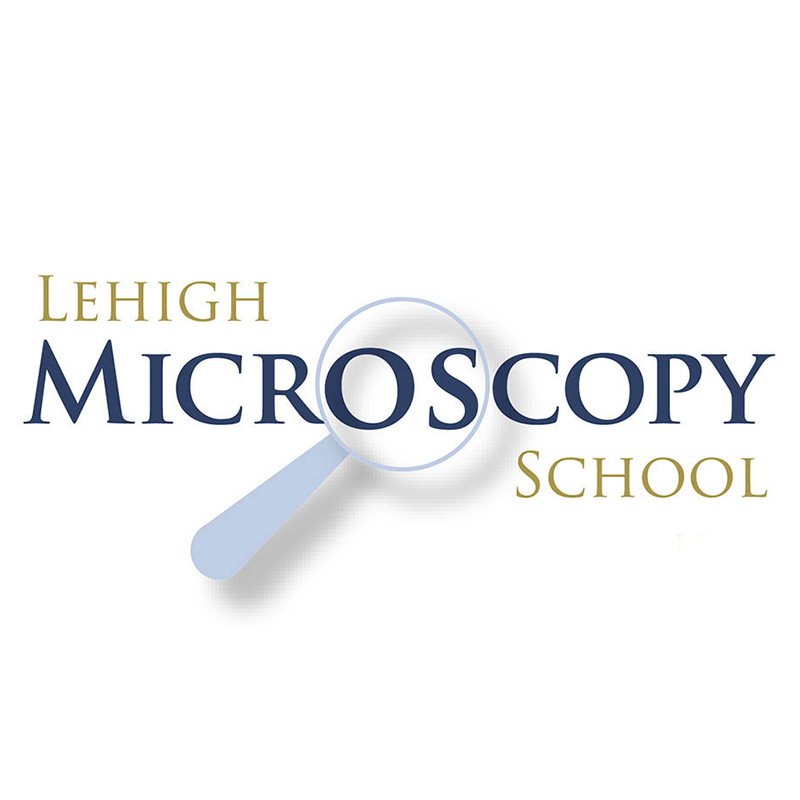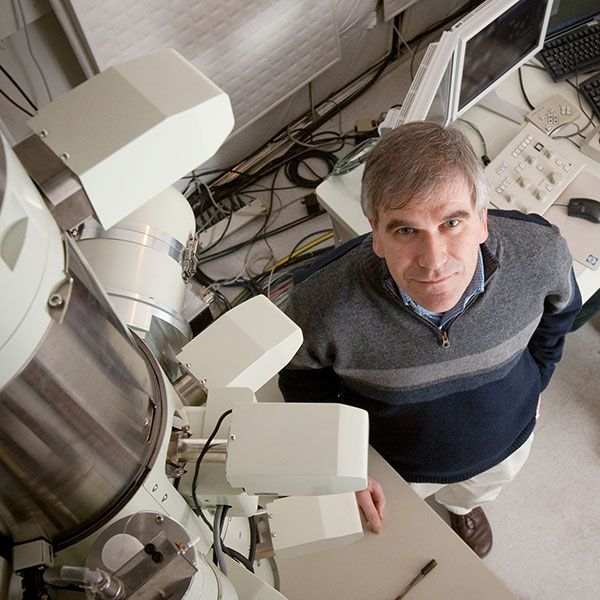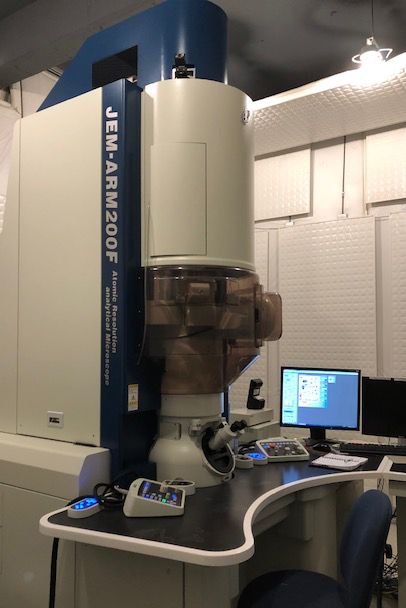The Lehigh Microscopy School has been running for nearly half a century.
The current session, which started June 2, marks the school’s 49th year. Over six days, approximately 100 students from industry, government laboratories, and academia will take one of six courses from experts in the field of electron microscopy. The ultimate goal of the school is to teach participants how to get the best out of electron microscopes, says Chris Kiely, a professor of materials science and engineering at the P.C. Rossin College of Engineering and Applied Science and the school’s director.
“There are folks who attend who have never seen these instruments before, and quite a few who have worked with them and are looking to gain more experience,” says Kiely. “So we teach them about the instrument, how it’s built, what it can do, and how it operates. We’ll also show them how versatile it is, and the various ways for setting it up to do different tasks.”
Electron microscopes use a beam of accelerated electrons to take very high magnification images of materials.
“Typically, if you use a light microscope, the highest magnification is about 3,000 times,” says Kiely. “With electron microscopes, you can get to magnifications of around half a million times, allowing you to see things in much greater detail.”
They can also be used to measure the composition of materials, he says.
“You can figure out that a particular component contains so much iron, or so much cobalt, and do a detailed chemical analysis on the material.”
Applications of electron microscopes are widespread, and include nanotechnology, forensics, structural biology, device testing, and failure analysis.
Course offerings at the Lehigh Microscopy School include: Introduction to SEM (scanning electron microscopy) and EDS (energy dispersive X-ray spectroscopy) for the New SEM Operator, Transmission Electron Microscopy, and Focused Ion Beam Instrumentation and Applications. All courses include a lab component where small groups of students can experience practical applications of the lecture topics.
“And we keep them working,” says Kiely, who is also one of the lecturers. “From 8:30 in the morning until about 9:30 at night.”
The school began in 1970. To date, approximately 7,000 students from about 38 countries and all 50 states have attended. At least 20 of the school’s lecturers have served as president of one of the major microscopy, microanalysis, or materials societies, says Kiely, and there will be more than 30 lecturers participating this year.
While Lehigh University has 10 electron microscopes ranging from “fairly basic” to a state-of-the-art, $5 million machine—which uses its 20 million times magnification capability to reveal the atomic structure of materials—the courses wouldn’t be possible without the participation of instrument manufacturers, says Kiely.
About 20 such companies send microscopes, ancillary instruments, and skilled technicians to boost the school’s capacity and ensure all the equipment runs smoothly.
“We couldn’t do it without them,” says Kiely.
It’s all clearly working as indicated by the school’s impressive 49-year run. Word has long since spread that Lehigh University is the destination for this type of education. In fact, Kiely says, every year about 70 percent of the participants say they heard about the school through word of mouth.
“It’s quite gratifying when you hear companies say, ‘If you’ve got to learn about microscopy, you should go to Lehigh,’” says Kiely. “That means the quality of what we’re doing is good, and stands the test of time.”
—Christine Fennessy is staff writer for the P.C. Rossin College of Engineering and Applied Science.



